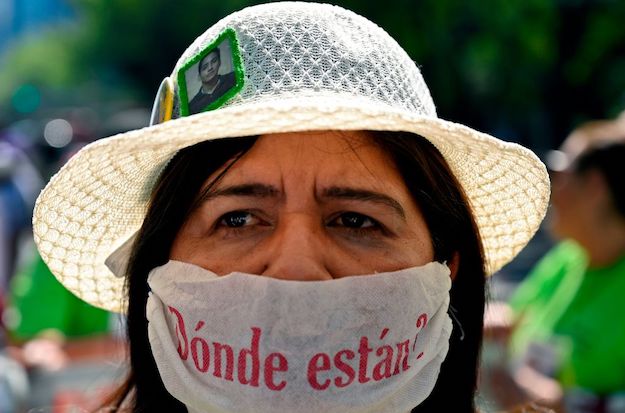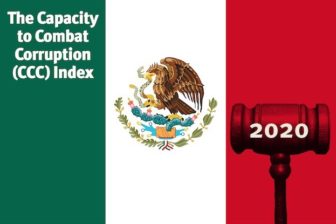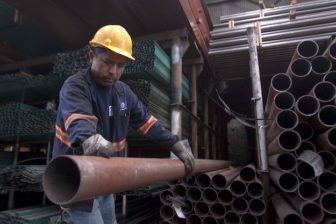MEXICO CITY – Justice is driven by a series of precise gears – if one fails, the system suffers. But often it is only the consequences of such breakdowns that come into public view. In Mexico, for example, 90% of crimes go unreported. For those that are called in, impunity is astronomically high: 96.1% in local cases and 94.6% in federal ones. In other words, of all the cases investigated by authorities, only 4%-6% reach an adequate conclusion.
But why?
Failures of the justice system are similarly palpable in levels of violence. In 2019, Mexico’s homicide rate was the highest in 20 years, averaging 94 murders per day. Despite this, and the implications for public life, not enough attention is paid to the causes – the grinding of those little gears – that have brought the system to the edge of collapse.
Recent violence in the state of Guanajuato offers an illustrative view of the shortcomings in Mexico’s justice system – and some of what can be done to address them.
First, the pervasiveness of cartel violence in the state suggests a clear absence of public policy at all levels designed to prevent crime in the first place. Under previous administrations, as well as under President Andrés Manuel López Obrador, security strategies have focused first and foremost on the use of public force. It has not worked. In Guanajuato, 706 members of the Santa Rosa de Lima Cartel and 662 of the Cartel Jalisco Nueva Generación have been arrested in the last 18 months even as the homicide rate has spiked to record highs.
But just as significant is a lack of planning, coordination and prioritization among local and federal authorities tasked with dealing with crime in general, and organized crime in particular.
The arrest among other alleged cartel members on June 20 of the mother of “El Marro,” the leader of the Santa Rosa cartel, is a case in point. This was a direct action against an organized crime group, but was nonetheless coordinated not by the federal attorney general’s office (FGR) but by state authorities. Having not been involved in the arrest, the FGR was limited to a public pronouncement on inconsistencies and procedural errors in the operation, saying it would open an investigation into the state attorney general’s office. “El Marro’s” mother was released a week later, her detention declared invalid. It was a prime example – but far from an isolated one – of the consequences of failed coordination between state and federal authorities.
In such cases, media and public attention tends to focus on the judges who allow alleged criminals to go free. But much of this dysfunction is baked deeper into the cake of Mexico’s justice system. Management models and criminal policy are inadequate at both the state and federal level, and lead to numerous disconnects between authorities in the cases they pursue, how they use limited resources, and their strategies for dealing with organized crime.
In Guanajuato, for example, the state’s attorney general has made the strategic decision to pursue all homicides as individual cases – despite the fact that many if not most are clearly part of a broader network of criminal activity (evident enough in the types of weapons used and the nature of the crimes committed). This prevents authorities from analyzing criminality on a macro scale, and limits local and federal agencies in efforts to prosecute organized crime writ large.
Indeed, in many instances a highly inefficient modus operandi persists at the local level, in which authorities investigating a homicide often only concern themselves with prosecuting triggermen, who can be replaced by organized crime groups almost immediately.
A shift in focus is needed. Dismantling organized crime requires coordinated action between federal and local authorities. Without it, cartels will prevail because they have both the economic means and the manpower to keep their basic operating structures in place.
Again, Guanajuato shows the urgency of reform. Last year, 814 state investigations were sent to the FGR. In 2020 so far, the number is 398. But despite the huge caseload, there is no existing strategy governing joint investigations of high-impact crimes, nor one for coordination throughout the justice process.
A clearer line of competency – who is responsible for what – in pursuing organized crime is sorely needed, alongside greater collaboration and coordination among municipal, state and federal authorities. For that to happen, the FGR needs to take ownership of investigations that fall within its purview, such as those related to organized crime. Too often, federal prosecutors take their autonomy as justification for absenting themselves from their obligation to coordinate criminal investigations with and among state authorities.
Immediate reforms could focus on building a more functional judicial framework that establishes clear rules over how high-impact crimes will be pursued at all levels of government. This was partly the intent of the Federal Organized Crime Law originally passed in 1996. But that law, meant to provide exceptions to normal criminal procedure, has since permeated the entire judicial system, as anti-crime strategies have focused increasingly on punitive policies. When the exception became the rule, the law ceased to be a functional way to deal with high-impact crimes. Nor does the law establish specific guidelines and methods to prioritize attention on such crimes, leaving prosecutors without the resources they need to succeed.
But while the gears of justice in Mexico need to be adjusted, they should not be replaced. López Obrador has spoken of the need to overhaul the system, but in truth existing mechanisms have never been given a chance to function fully. Allowing them to do so would start with criminal policy that takes a comprehensive view of security and justice priorities. Policies and management models need to be put in place that will encourage collaboration between the FGR and state attorney’s offices. Criminal investigations need to be technical and specialized, rather than being the sole remit of prosecutors’ offices who, as it stands, substantiate their own investigations in court (compromising their validity and creating an opening for corruption).
Finally, Mexico needs a new normative framework specific to organized crime that clarifies the competencies of distinct local and federal agencies. Without such basic reforms, new anti-crime strategies will be built over existing defects – and the gears of justice will continue to grind fruitlessly away.
—
Novoa is a political scientist and specialist in justice systems. Follow her on Twitter @marianovoacv







